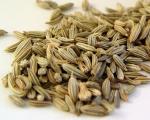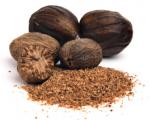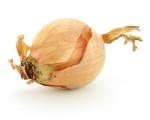دنیای زبان انگلیسی ( بهروزپور )
لغات و اصطلاح .داستان کوتاه . شعر.جوک .ضرب المثل.اشپزی.رمان. نمایشنامه.متن دوزبانهدنیای زبان انگلیسی ( بهروزپور )
لغات و اصطلاح .داستان کوتاه . شعر.جوک .ضرب المثل.اشپزی.رمان. نمایشنامه.متن دوزبانهAlfred, Lord Tennyson’s “The Eagle
THE EAGLE
By Alfred, Lord Tennyson
FRAGMENT
He clasps the crag with crooked hands;
Close to the sun in lonely lands,
Ringed with the azure world, he stands.
The wrinkled sea beneath him crawls;
He watches from his mountain walls, And like a thunderbolt he falls.
پنج راه موفقیت
Five Tips For A Successful Fundraiser

For a successful fundraiser, several important fundraising strategies can help encourage success. When planning any fundraiser, you must make many decisions regarding fundraising items, dates, timing, costs versus profit and working with a committee. Tackling each task step-by-step can help the planning process run smoothly.
1. Choose A Product Or Event
Even before choosing a product or event, you need to know your fundraising goals. Knowing how much money you want to raise will make the decision about an event or product much easier. Make your goal realistic in terms of your target consumers. The higher your goal, the more you will expect people to contribute per person. This translates to the difference between an event where consumers will spend more money, such as an auction or casino night, or buy small ticket items, such as flowers, lollipops or cookie dough. Meet with your committee and set the goal, then choose the product or event based on the goal.
2. Choose The Length Of The Fundraiser
Regardless of whether you are planning an event or the sale of a product, the fundraiser will have an estimated length and an end date. Don't make the sale go on too long, or people will get burned out. With a long fundraiser, there is a higher chance of money getting lost, not to mention the direction and sense of purpose getting lost as the days drag along. Two to three weeks seems appropriate for most item sales, and two to three hours for most events. Choosing your starting and ending dates and times will then make it easy to find and set the fundraiser on the calendar.
3. Choose The Timing Of The Fundraiser
This refers to the time of year the fundraiser will happen. You may need to plan around other fundraisers, holidays and vacations. Don't double up with other fundraisers in the same organization, and try to avoid timing your fundraiser right after the winter holidays, when everyone is strapped for cash. Also, you want to plan your fundraiser when you can reach the most potential consumers, so winter, spring or summer breaks are usually out.
4. Know Your Costs
It's important to be aware of the costs of the product you will sell, or the costs of all aspects of the event, so you can calculate how much profit to expect. After all, you will need to take the costs out of whatever you make, and you end up with a smaller amount than the total you raised. You want to choose something with the highest potential profit once the costs are taken care of.
5. Working With A Committee
Planning a fundraiser takes many hands. Don't take it on alone. Delegate, and take advantage of the strengths and contacts of those in the committee. Be organized, and keep in touch with all who are working on the fundraiser. Keep those who miss meetings up to date. It's important to make sure the projects and tasks flow and all products and money are accounted for.
Rainbow
A rainbow is an optical and meteorological phenomenon that causes a spectrum of light to appear in the sky when the Sun shines on to droplets of moisture in the Earth's atmosphere. It takes the form of a multicoloured arc, with red on the outer part of the arc and violet on the inner section. A rainbow spans a continuous spectrum of colours; the distinct bands are an artifact of human colour vision. The most commonly cited and remembered sequence, in English, is Newton's sevenfold red, orange, yellow, green, blue, indigo and violet (popularly memorized by mnemonics like Roy G. Biv). Rainbows can be caused by other forms of water than rain, including mist, spray, and dew.
Rainbows can be observed whenever there are water drops in the air and sunlight shining from behind at a low altitude angle. The most spectacular rainbow displays happen when half the sky is still dark with raining clouds and the observer is at a spot with clear sky in the direction of the sun. The result is a luminous rainbow that contrasts with the darkened background.
The rainbow effect is also commonly seen near waterfalls or fountains. In addition, the effect can be artificially created by dispersing water droplets into the air during a sunny day. Rarely, a moonbow, lunar rainbow or nighttime rainbow, can be seen on strongly moonlit nights. As human visual perception for colour is poor in low light, moonbows are often perceived to be white.[1] It is difficult to photograph the complete semicircle of a rainbow in one frame, as this would require an angle of view of 84°. For a 35 mm camera, a lens with a focal length of 19 mm or less wide-angle lens would be required. Now that powerful software for stitching several images into a panorama is available, images of the entire arc and even secondary arcs can be created fairly easily from a series of overlapping frames. From an aeroplane, one has the opportunity to see the whole circle of the rainbow, with the plane's shadow in the centre. This phenomenon can be confused with the glory, but a glory is usually much smaller, covering only 5–20°.
At good visibility conditions (for example, a dark cloud behind the rainbow), the second arc can be seen, with inverse order of colours. At the background of the blue sky, the second arc is barely visible.
The seven colours of the rainbow
A rainbow spans a continuous spectrum of colours—there are no "bands." The apparent discreteness is an artefact of the photopigments in the human eye and of the neural processing of our photoreceptor outputs in the brain. Because the peak response of human colour receptors varies from person to person, different individuals will see slightly different colours, and persons with colour blindness will see a smaller set of colours. However the seven colours listed below are thought to be representative of how humans everywhere,[35] with normal colour vision, see the rainbow.
Newton originally (1672) named only five primary colours: red, yellow, green, blue and violet. Later he included orange and indigo, giving seven colours by analogy to the number of notes in a musical scale.[36]
Red: . Orange: . Yellow: . Green: . Blue: . Indigo: . Violet: .
خدا رو شکر که....
I am thankful for the alarm that goes off in the early morning house,
because it means that I am alive
خدا را شکر که هر روز صبح باید با زنگ ساعت بیدار شوم، این یعنی من هنوز زنده ام
I am thankful for being sick once in a while,
because it reminds me that I am healthy most of the time
خدا را شکر که گاهی اوقات بیمار میشوم، این یعنی بیاد آورم که اغلب اوقات سالم هستم
I am thankful for the husband who snoser all night,
because that means he is healthy and alive at home asleep with me
خدا را شکر که تمام شب صدای خرخر شوهرم را می شنوم
این یعنی او زنده و سالم در کنار من خوابیده است
I am thankful for my teenage daughter who is complaining about doing dishes,
because that means she is at home not on the street
خدا را شکر که دختر نوجوانم همیشه از شستن ظرفها شاکی است
این یعنی او در خانه است و در خیابانها پرسه نمی زند
I am thankful for the taxes that I pay, because it means that I am employed
خدا را شکر که مالیات می پردازم، این یعنی شغل و درآمدی دارم و بیکار نیستم
king lear
King Lear is a tragedy by William Shakespeare considered to be one of his greatest works, in which the title character descends into madness from the consequences of foolishly disposing of his estate between two of his three daughters based on their flattery. The play is based on the legend of Leir of Britain, a mythological pre-Roman Celtic king. It has been widely adapted for stage and screen, with the role of Lear played by many of the world's most accomplished actors.
The play is believed to have been written between 1603 and 1606 and later revised. The earlier version, The True Chronicle of the History of the Life and Death of King Lear and His Three Daughters, appeared in quarto in 1608. The Tragedy of King Lear, a more theatrical version, first appeared in the First Folio in 1623. Modern editors usually conflate the two versions, although some argue that each version has its individual integrity that should be preserved.[1]
After the Restoration, the play was often modified with a happy ending by theatre practitioners who disliked its dark and depressing tone, but since the 19th century it has been regarded as one of Shakespeare's supreme achievements. The tragedy is particularly noted for its probing observations on the nature of human suffering and kinship.
ادامه مطلب ...اموزش تصویری لغات (ادویه)
 Cinnamon |  Cloves |  Coriander Seed |
 Cream of Tartar |  Cumin Seed |  Curry Powder |
 Fennel Seed |  Fenugreek |  Garlic |
 Ginger |  Horseradish |  Mahleb |
 Mustard |  Nutmeg |  Onion |

